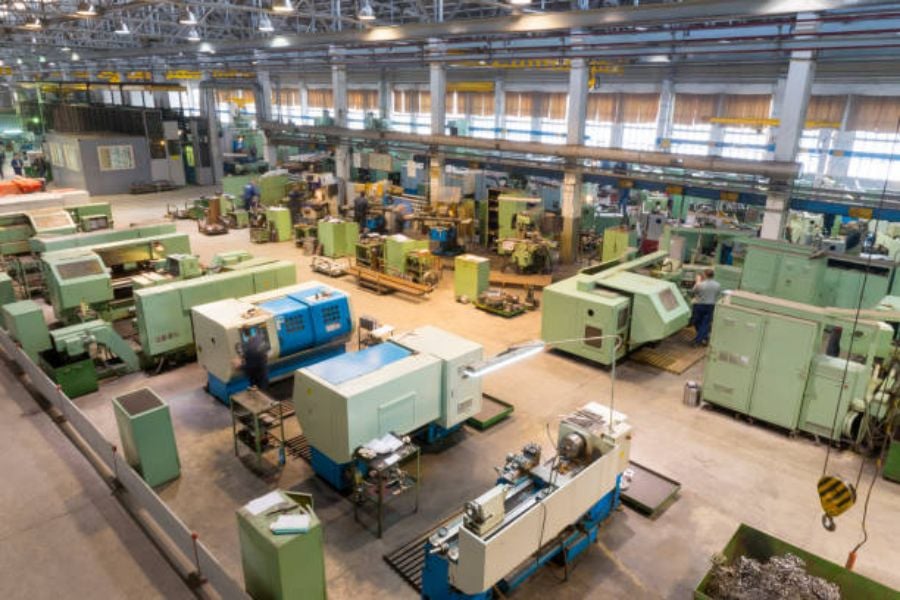Introduction
CNC machines have revolutionized the way products are manufactured. Computer Numerical Control (CNC) machines can produce precision parts and components quickly and easily.
4 axis cnc machines take this innovation one step further by adding an extra rotational axis to the traditional X,Y and Z axes that are standard in CNC machines. In this article, we will explore everything you need to know about 4 axis CNC machines.
What are 4 Axis CNC Machines?
4 axis CNC machines are similar to traditional CNC machines but include an additional rotational axis. The traditional axes of X, Y, and Z refer to the movement of the tool in a three-dimensional space. The fourth rotational axis adds a new level of control, allowing the tool to rotate and move at the same time. This enables the production of more complex parts, including twisted or curved geometries that would be impossible with traditional CNC machines.
Applications of 4 Axis CNC Machines
4 axis CNC machines are used in many industries, including aerospace, automotive, and medical. These machines are ideal for the manufacture of complex parts and components, including blades, gears, and turbines. The extra rotational axis allows for the creation of intricate shapes and curves in parts, which are impossible to manufacture using traditional CNC machines.
Advantages of 4 Axis CNC Machines
The main advantage of 4 axis CNC machines is their ability to produce complex parts with ease and precision. The added rotational axis allows for the creation of intricate parts that are impossible to manufacture using traditional CNC machines. 4 axis CNC machines also reduce the need for additional tools, saving time and money in the manufacturing process. Additionally, these machines offer improved accuracy and repeatability, ensuring that each part is consistent and reliable.
Disadvantages of 4 Axis CNC Machines
While 4 axis CNC machines offer many advantages, there are also some drawbacks. These machines are more complex than traditional CNC machines and require more advanced programming skills. They are also more expensive and require a higher level of maintenance. Finally, 4 axis CNC machines are not suitable for every application, and it is essential to ensure that the extra axis is necessary before investing in this technology.
Types of 4 Axis CNC Machines
There are several different types of 4 axis CNC machines, including vertical and horizontal machines. Vertical machines have the spindle in a vertical orientation, while horizontal machines have the spindle in a horizontal orientation. Each type of machine has its own advantages and disadvantages, and the choice of machine depends on the specific application.
Factors to Consider when Purchasing a 4 Axis CNC Machine
There are several factors to consider when purchasing a 4 axis CNC machine, including size, speed, accuracy, and software. The size of the machine must be large enough to accommodate the size of the parts being manufactured. The machine's speed determines how quickly parts can be produced, while accuracy is crucial for the creation of high-quality parts. Finally, software is critical for programming and controlling the machine.
Maintenance of 4 Axis CNC Machines
Regular maintenance is essential for ensuring the long-term performance of 4 axis CNC machines. Maintenance tasks include cleaning, lubrication, and checking for wear and tear. It is recommended to follow the manufacturer's maintenance schedule to keep the machine in optimal condition.
Training for 4 Axis CNC Machine Operators
Due to the complexity of 4 axis CNC machines, it is necessary to receive proper training before operating them. Operators require an understanding of the software and programming required to operate the machine. Additionally, proper safety measures must be followed to ensure that the operator and the machine are protected.
Conclusion
4 axis CNC machines offer many advantages over traditional CNC machines, including the ability to produce complex parts with ease and accuracy. These machines are used in many industries, including aerospace and automotive. While 4 axis CNC machines require more advanced programming skills, maintenance, and higher costs than traditional CNC machines, their precision and ability to create intricate shapes make them an attractive investment.
Quote Inquiry
Contact Us

